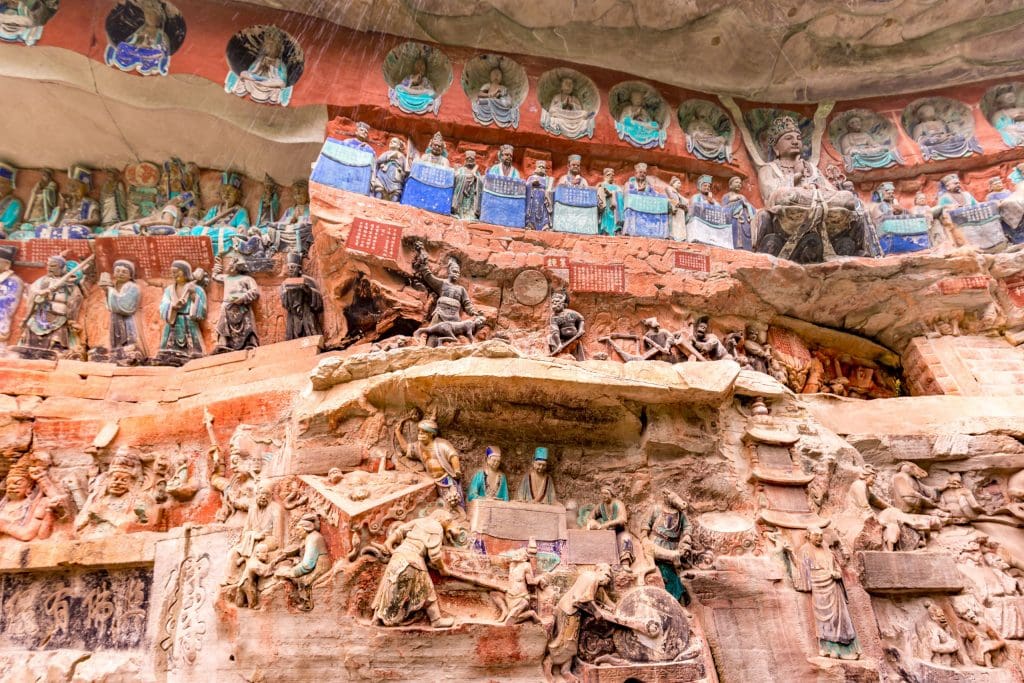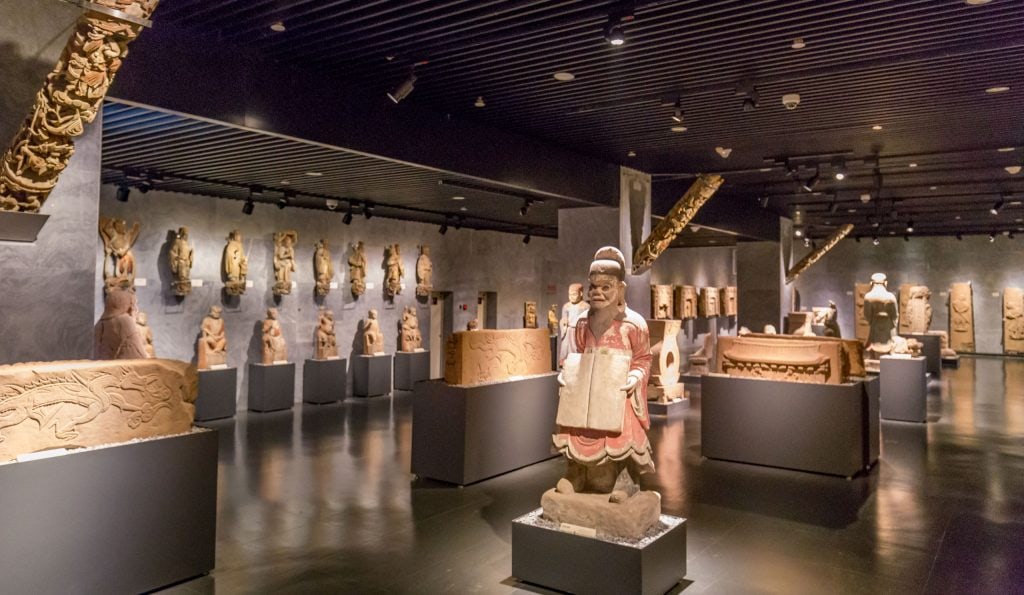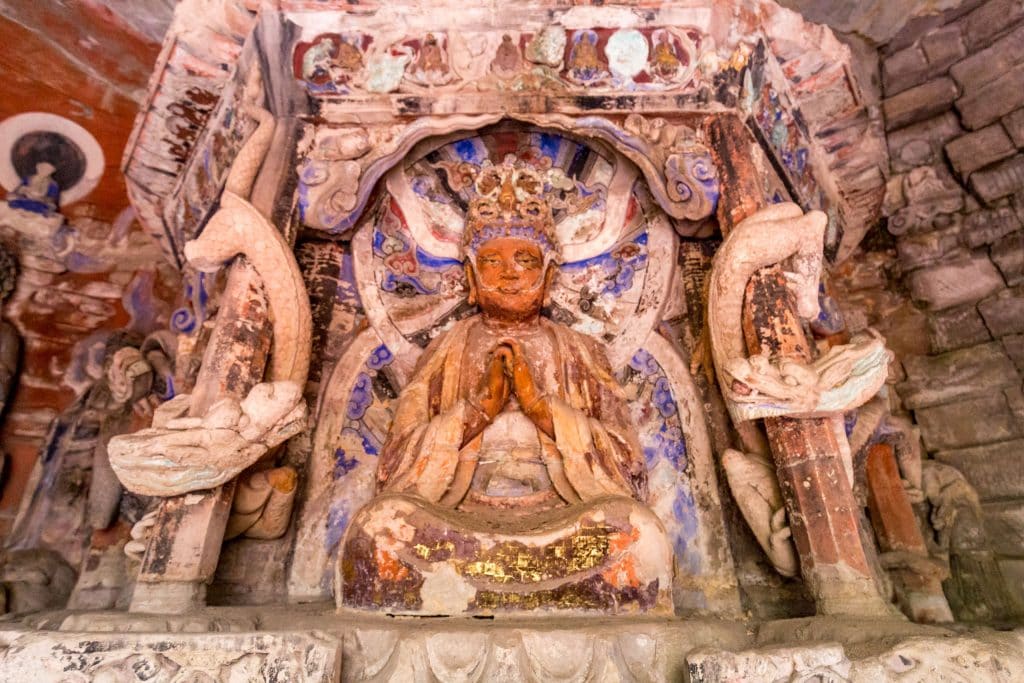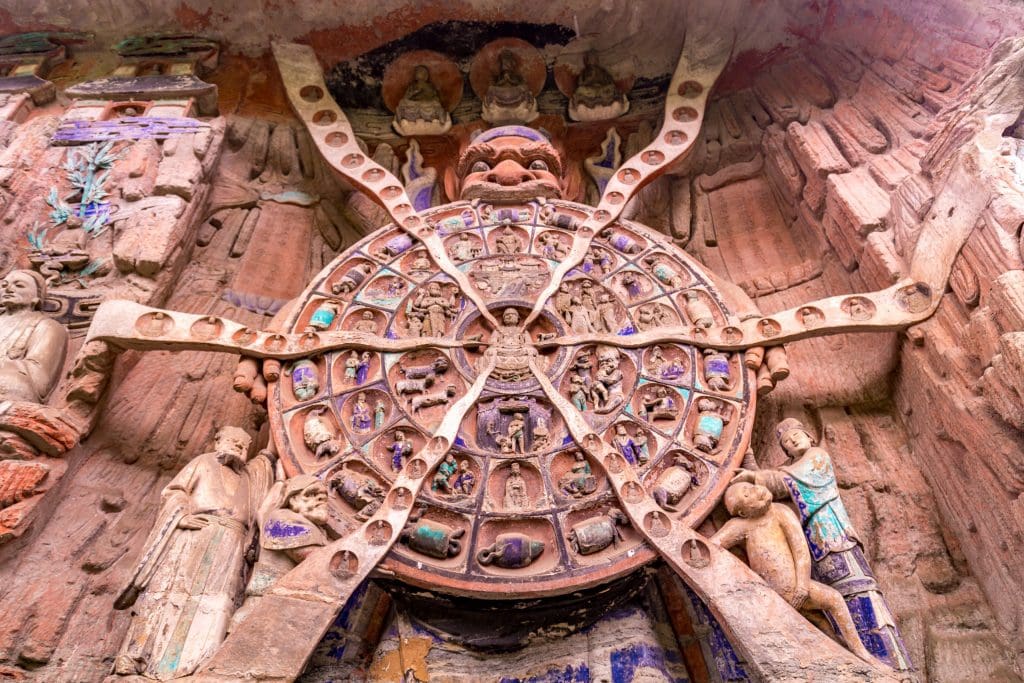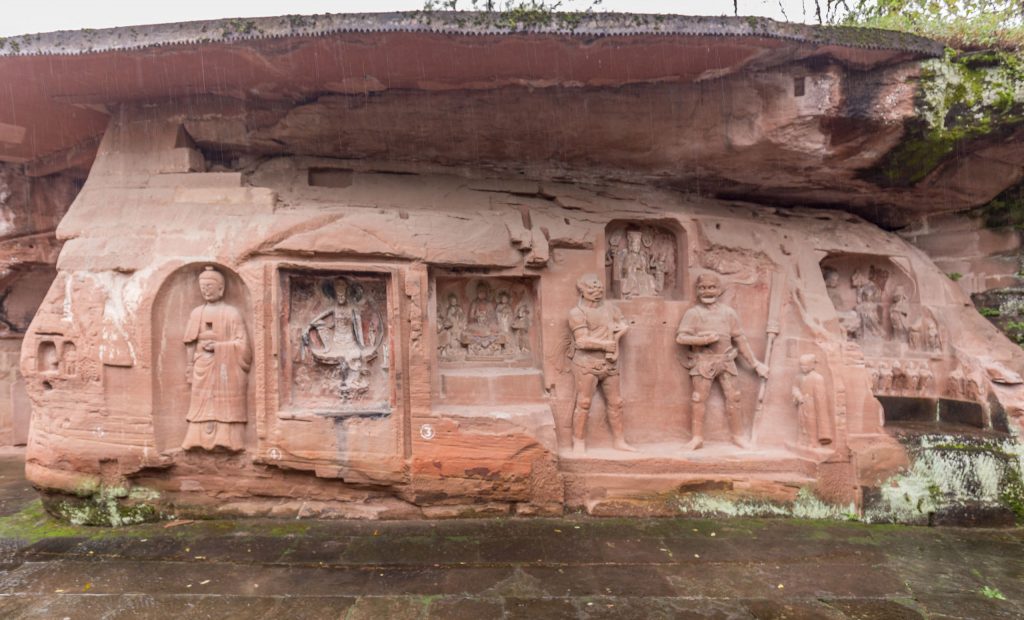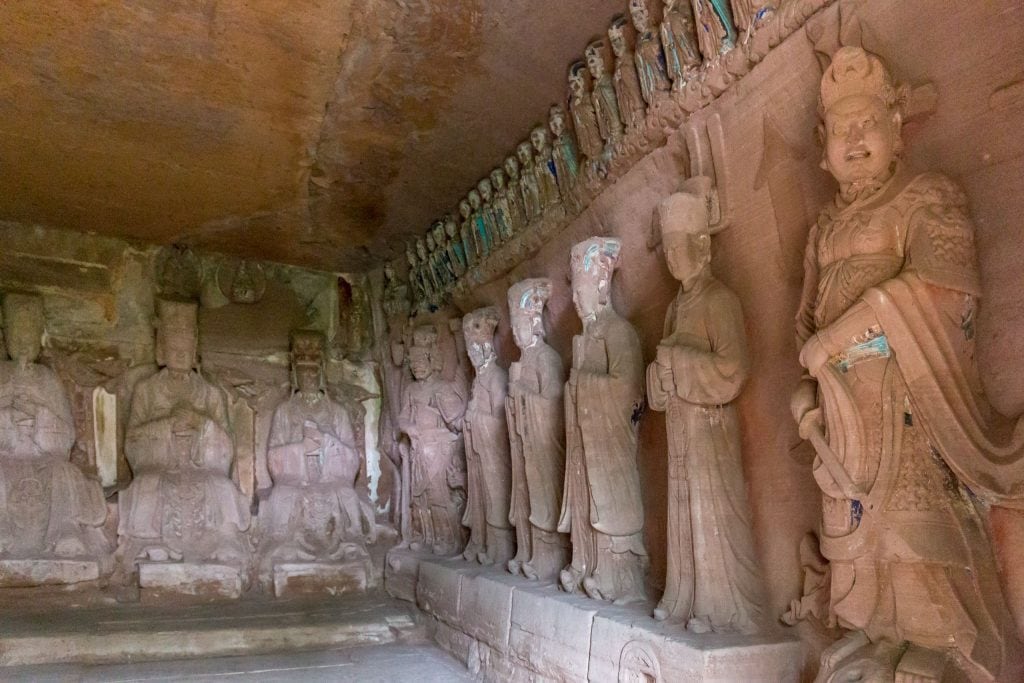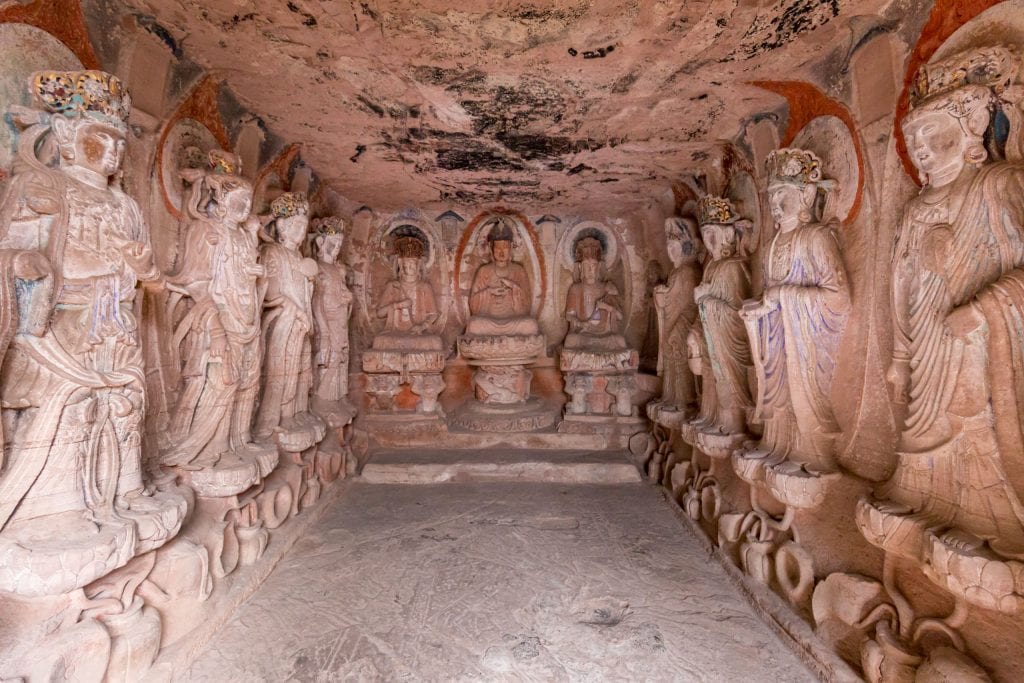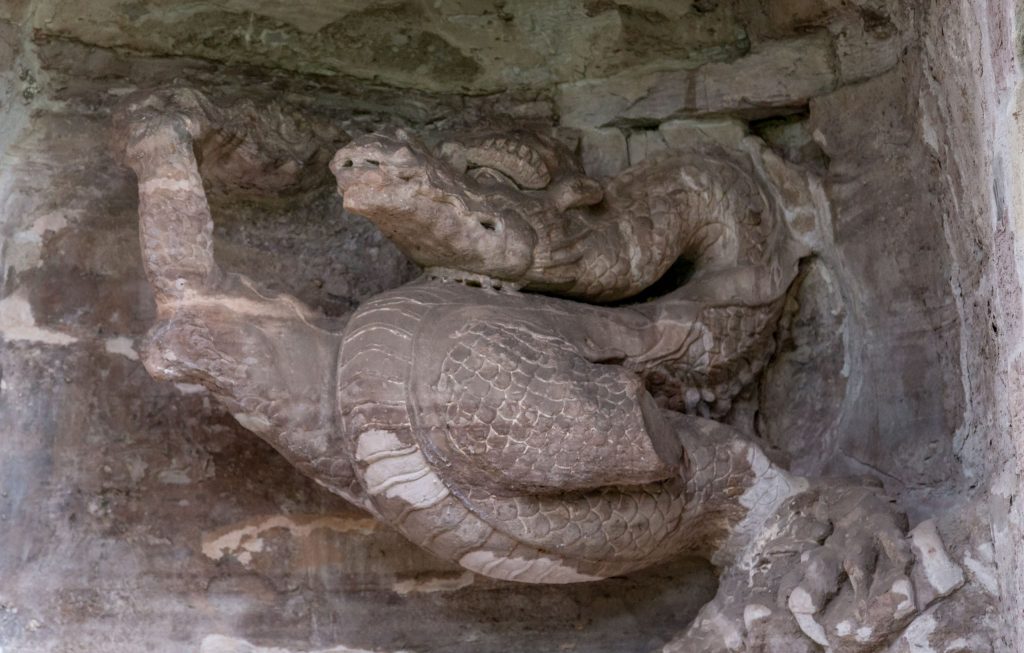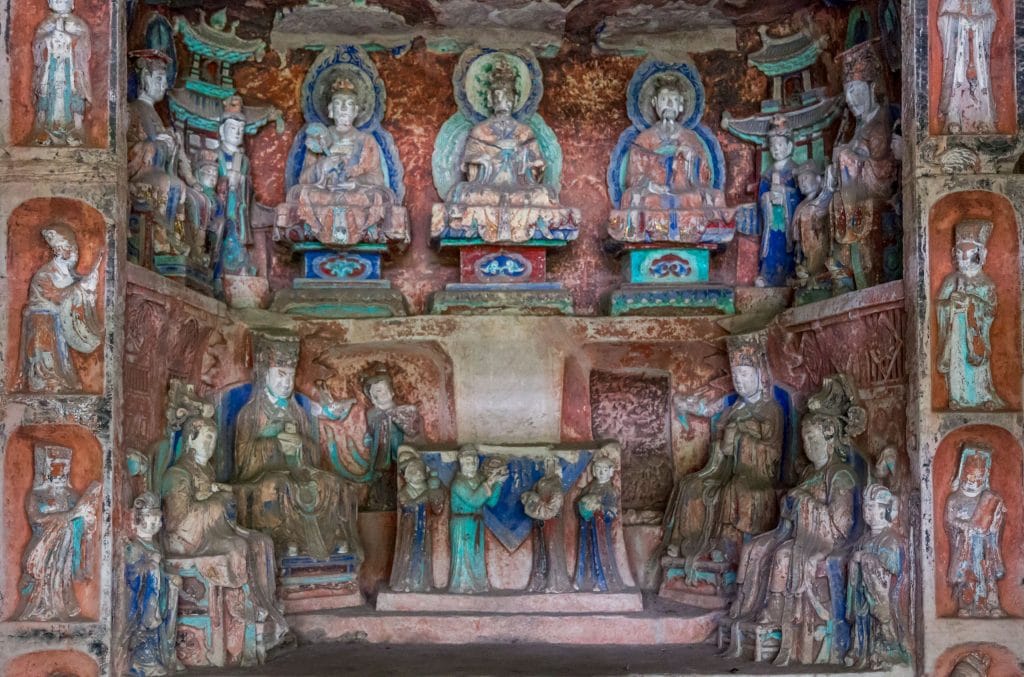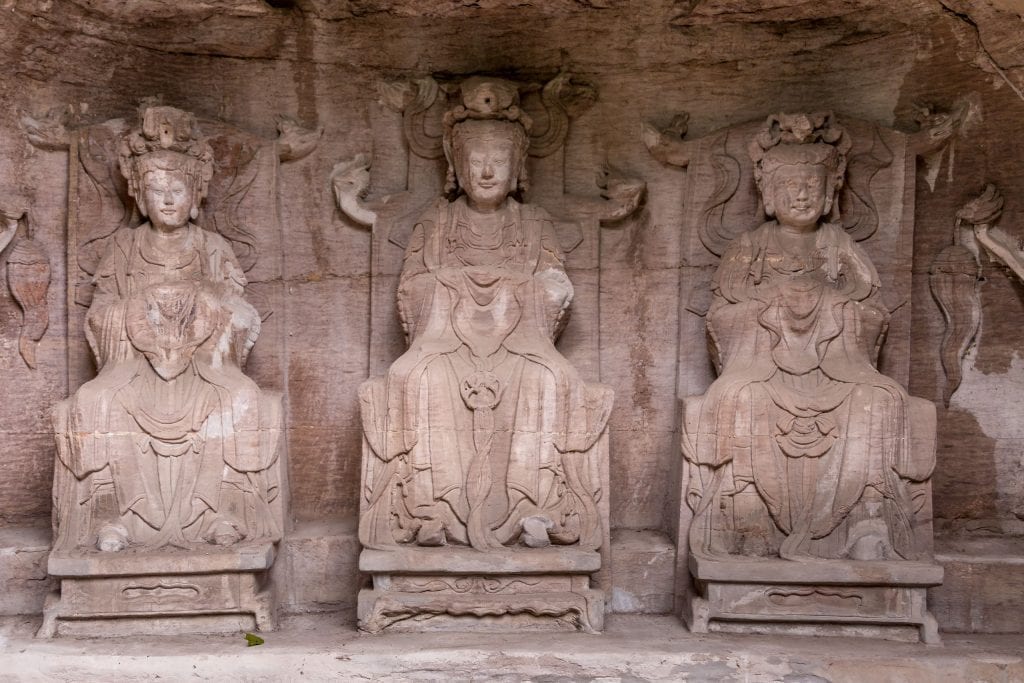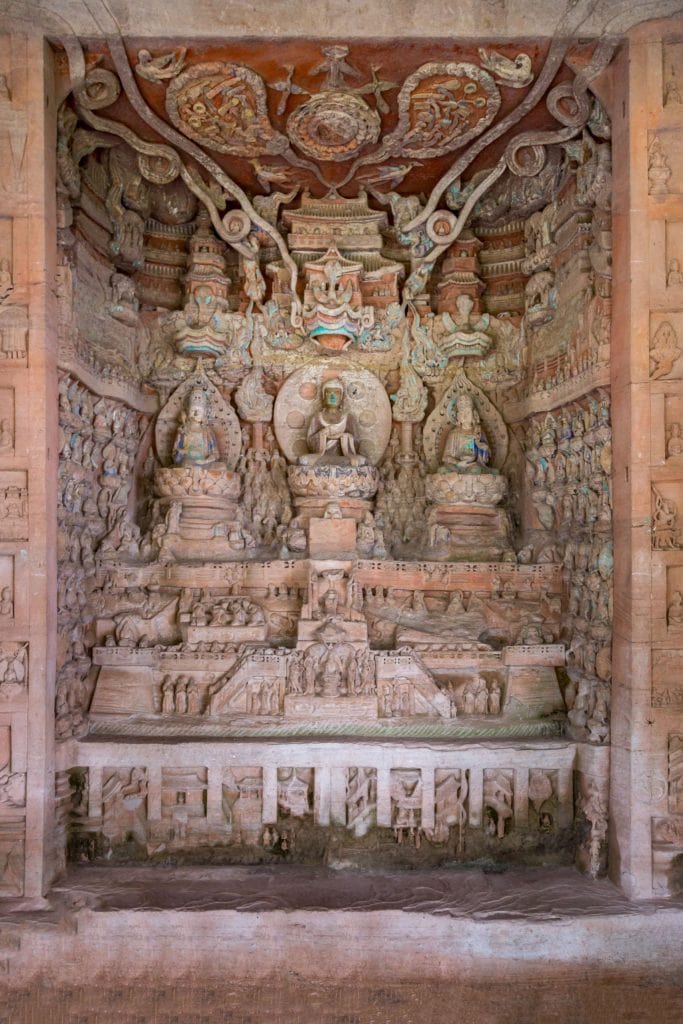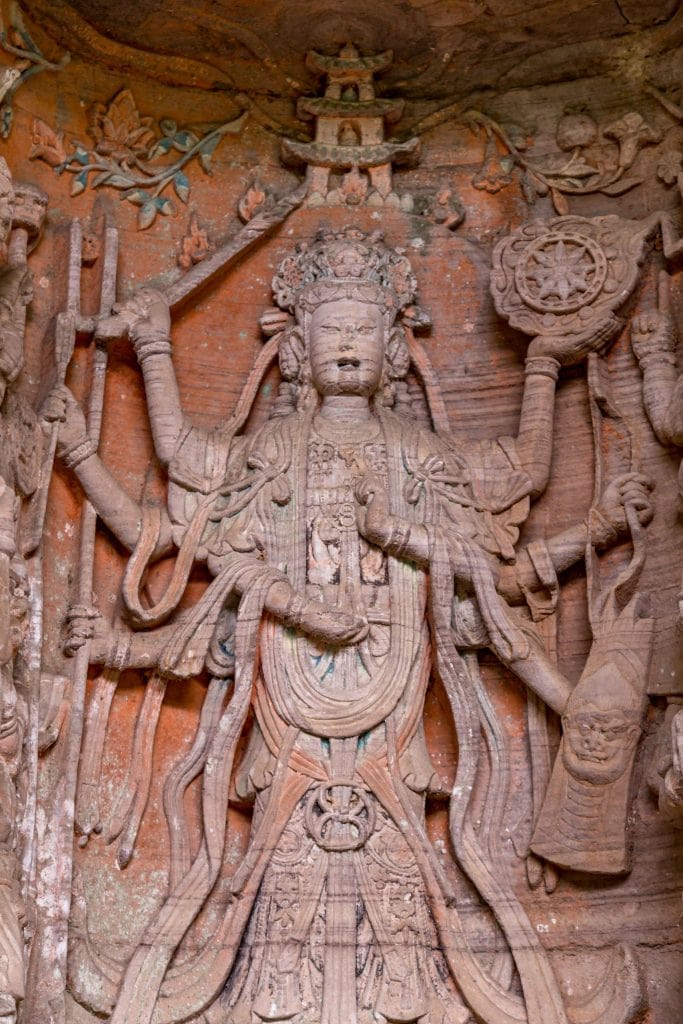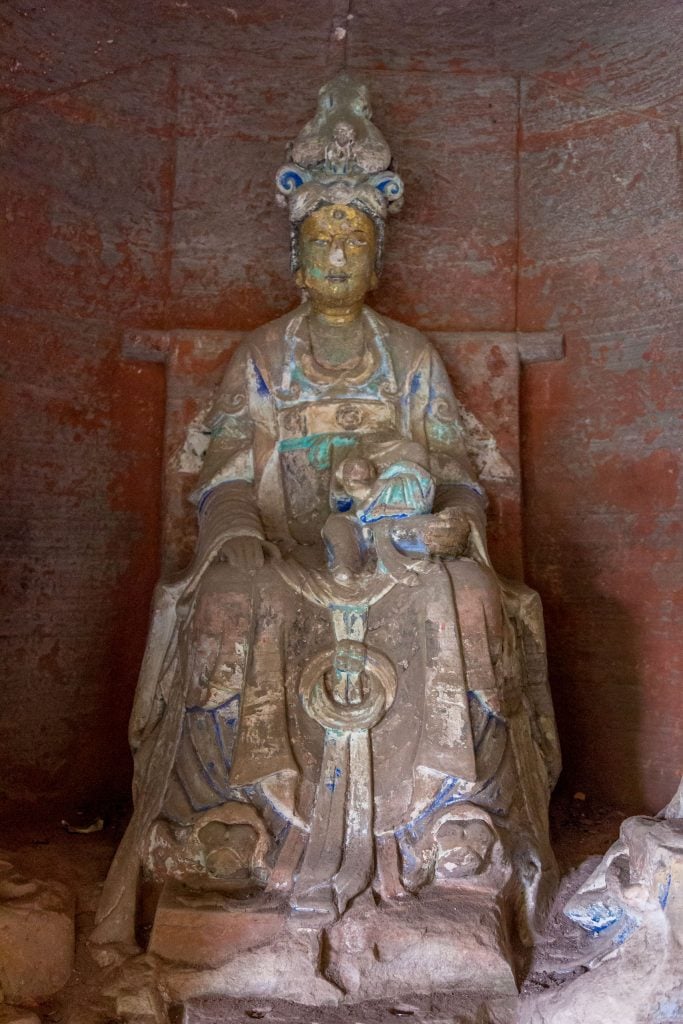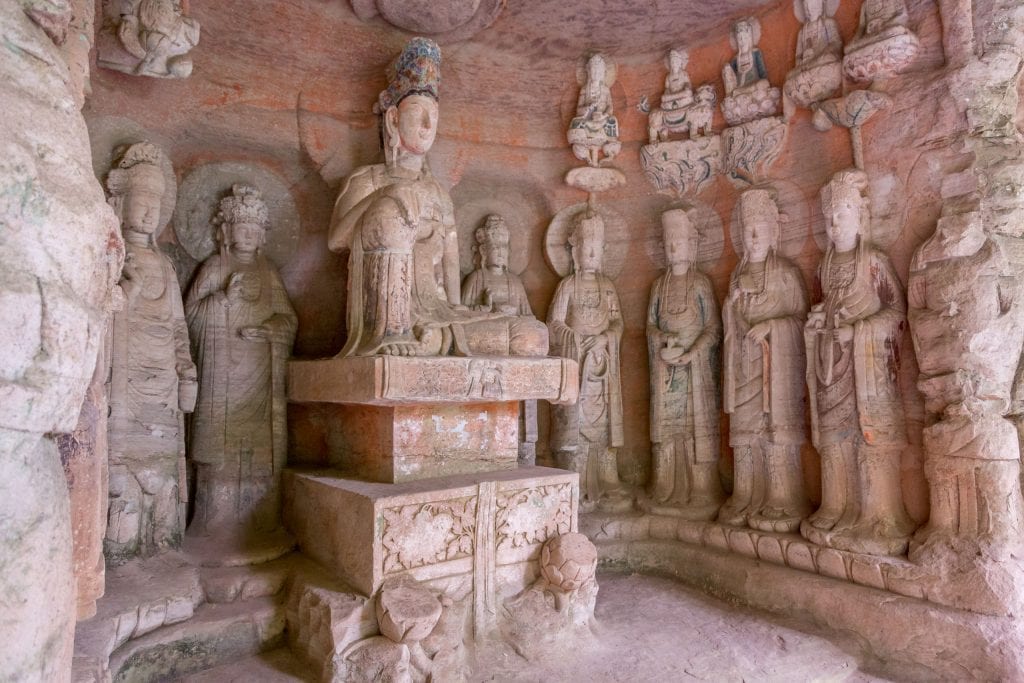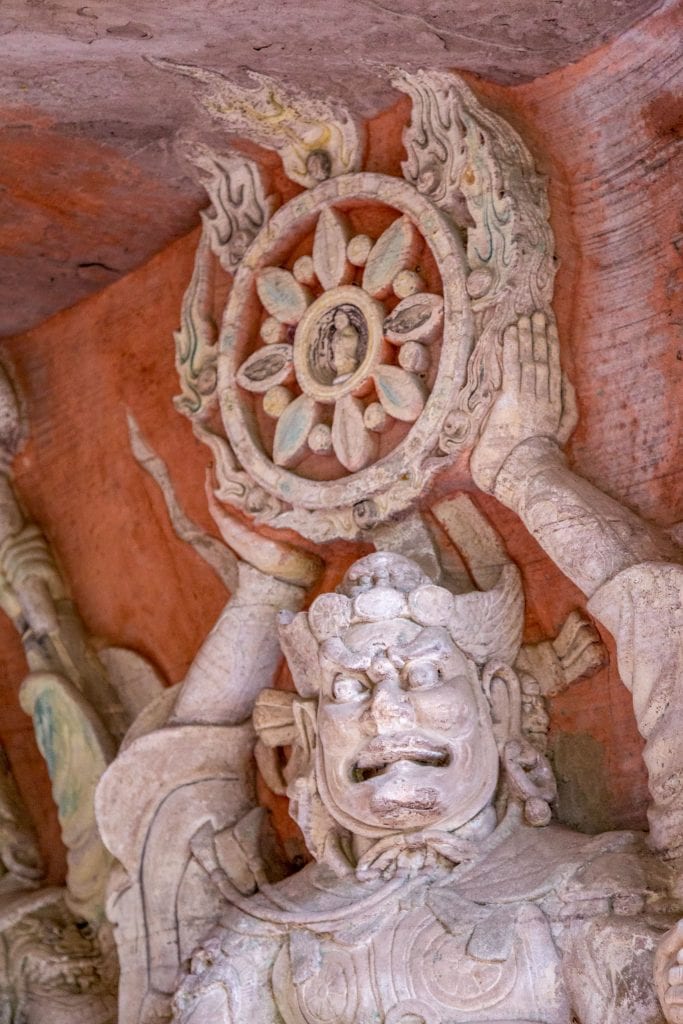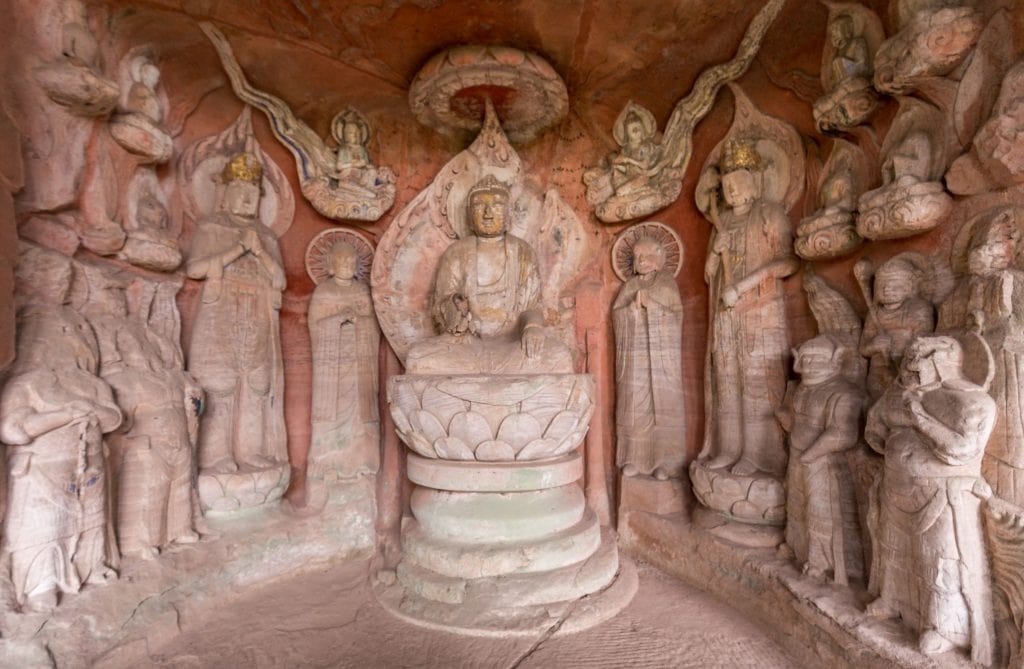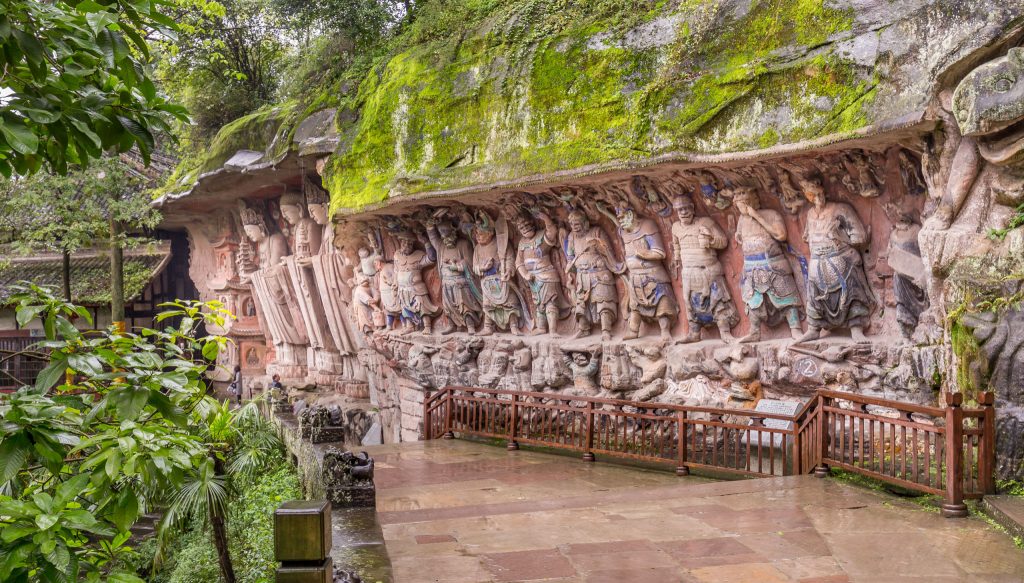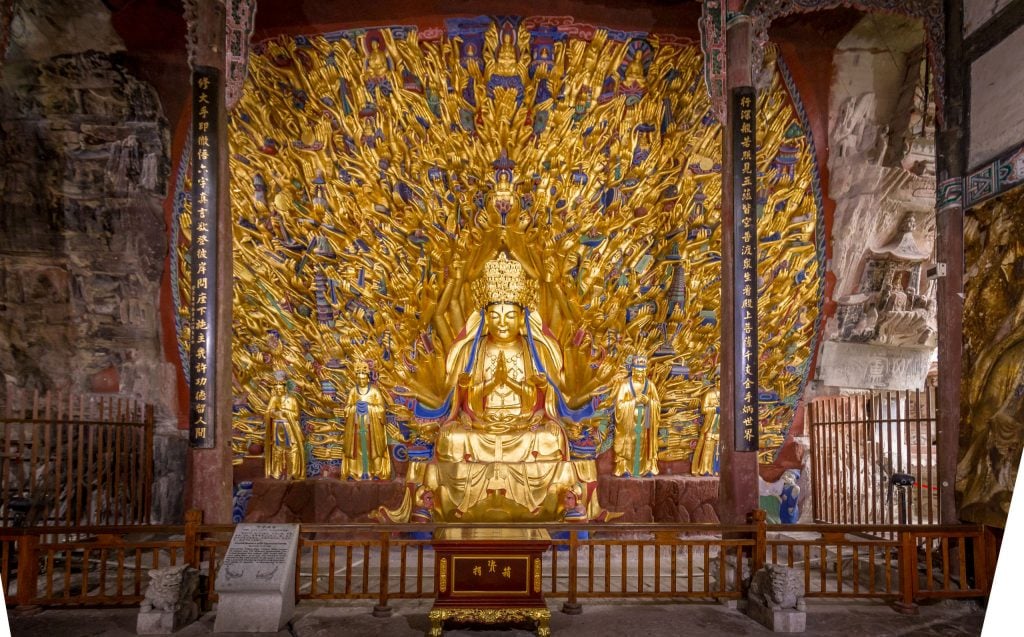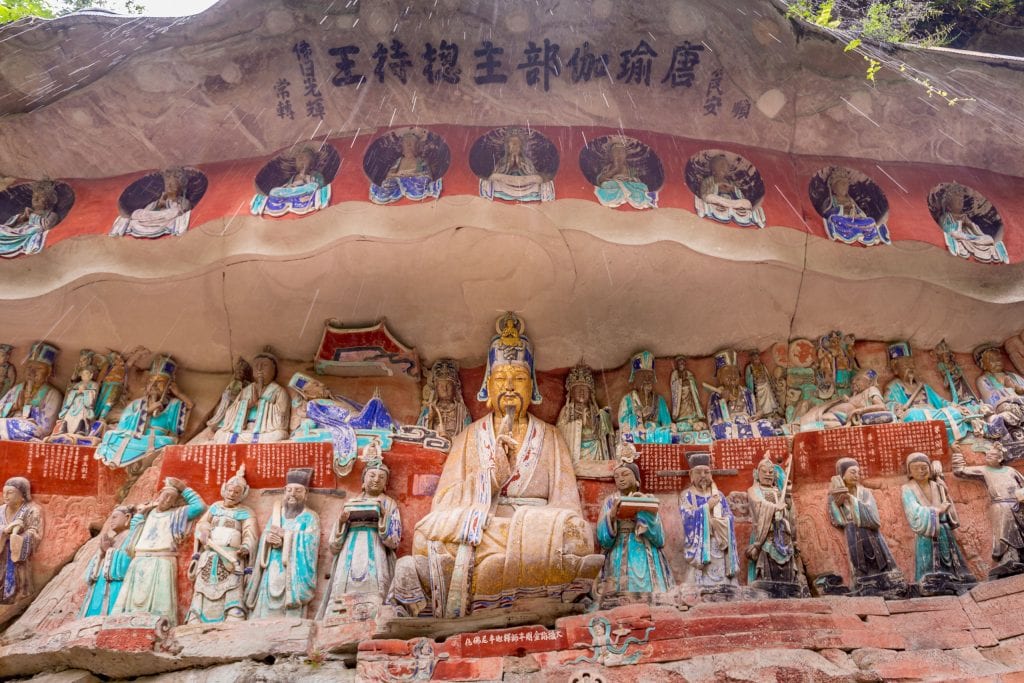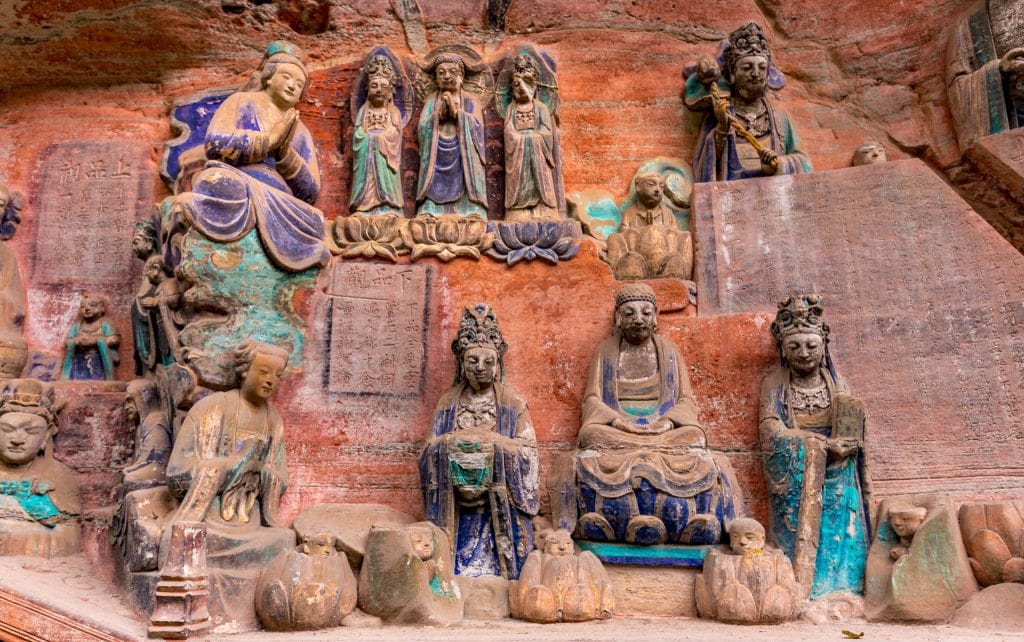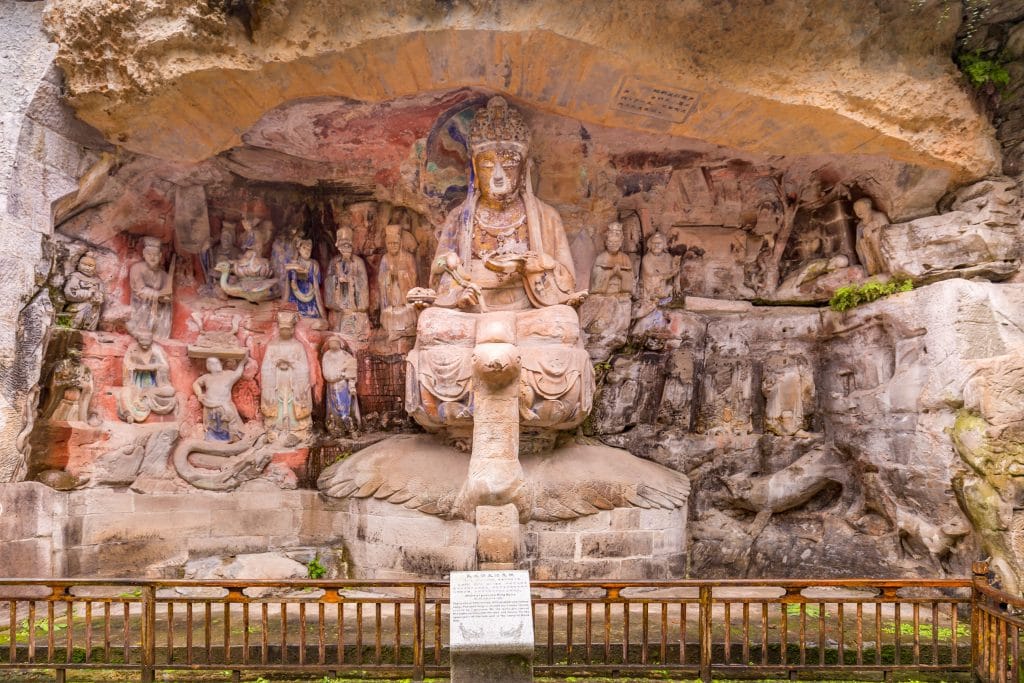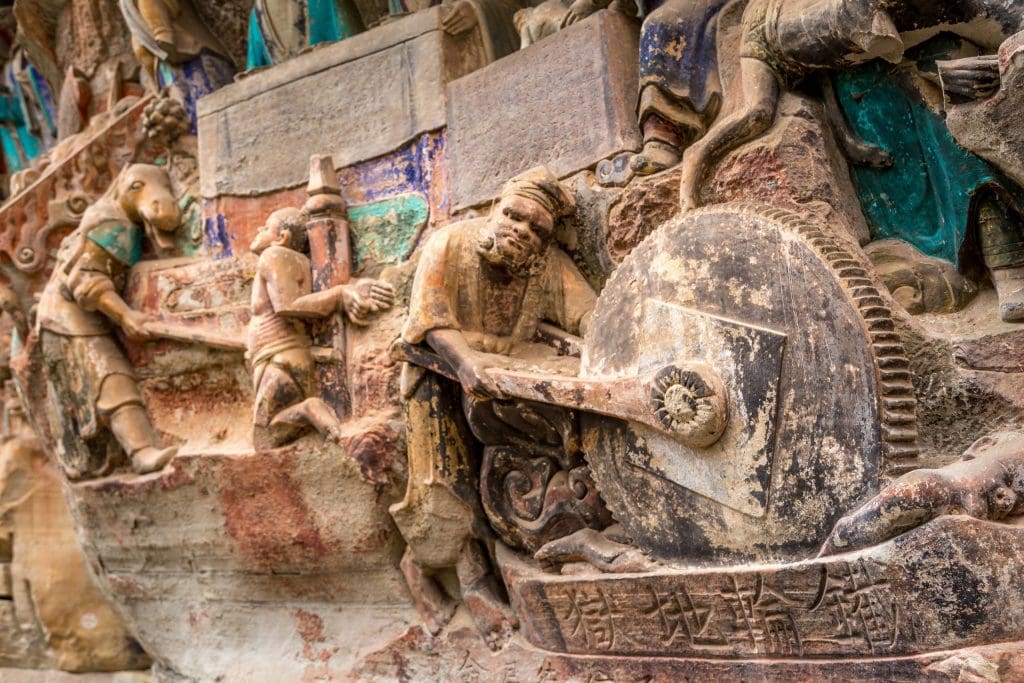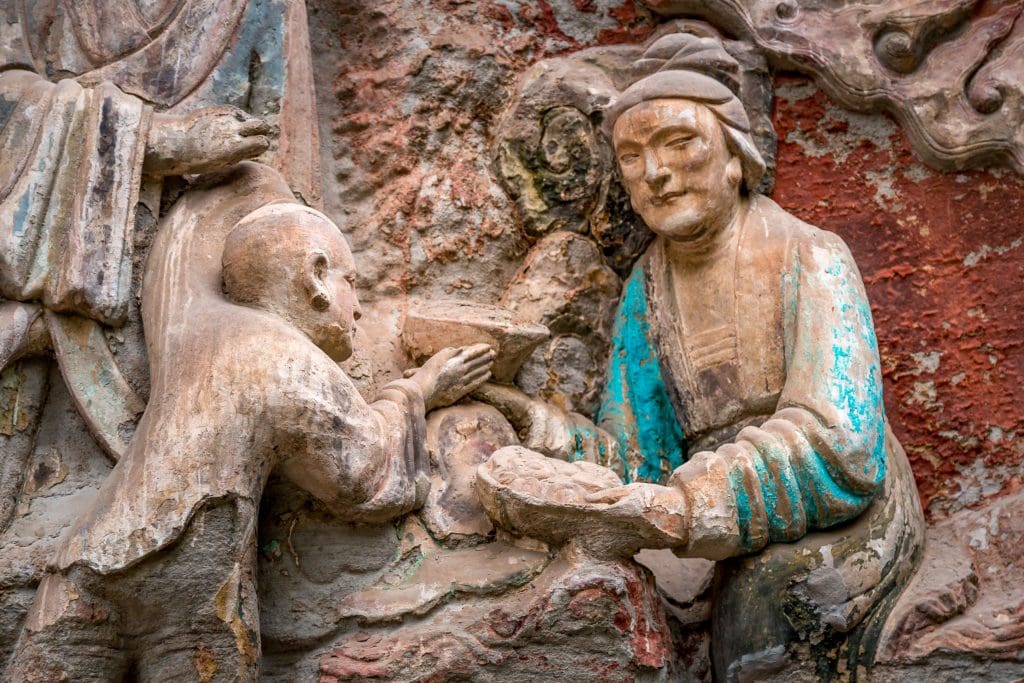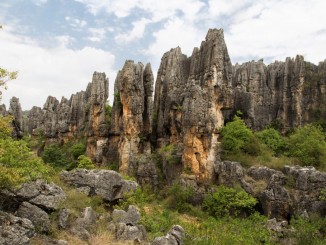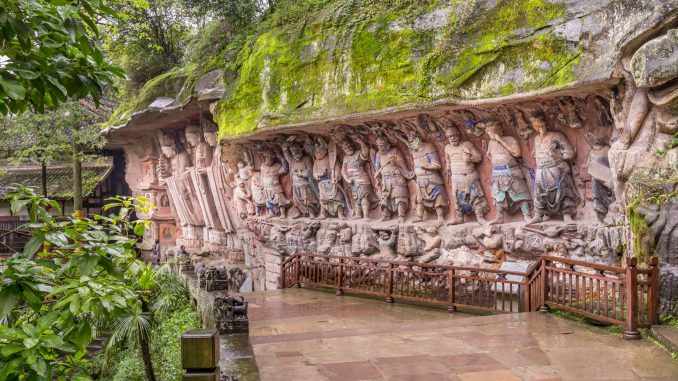
Table of Contents
I travel a lot which means I have seen a lot and this means I see more of the same quite often. Over time I learned to look at new places as if I travelled for the first time and not have this experience. The Dazu Rock Carvings are so unique that when I arrived even I stood still for 10 minutes just staring at them. There are are thousands of statues related to Buddhism, Toaism and Confucianism. These carvings are a UNESCO World Heritage Site and they really deserve it to be on the list.
I already visited the Yungang Rock Carvings and Longmen Rock Carvings which are two other similar sites in China. The Dazu Rock Carvings have been high on my list for a long time but only during my 12th visit to China I was able to see them. They can be reached easily from Chongqing or Chengdu but are a bit of the beaten track if you follow a first time China itinerary. I can just say one thing: Try to add them on your China itinerary as they are worth it. I’m sure you agree after seeing the photos!
How to get to the Dazu Rock Carvings
The Dazu Rock Carvings are located between Chongqing and Chengdu but are easier reached from Chongqing. If you have the time you could stay overnight in Dazu but don’t expect a nice city. It’s just famous for the thousands of statues scattered in the area. Chongqing however is a nice – fast developing – city with a long history. I recommend staying at the Intercontinental Chongqing for 4 nights and make a city tour, a Dazu day trip and a day trip to the karst formation of Wulong.
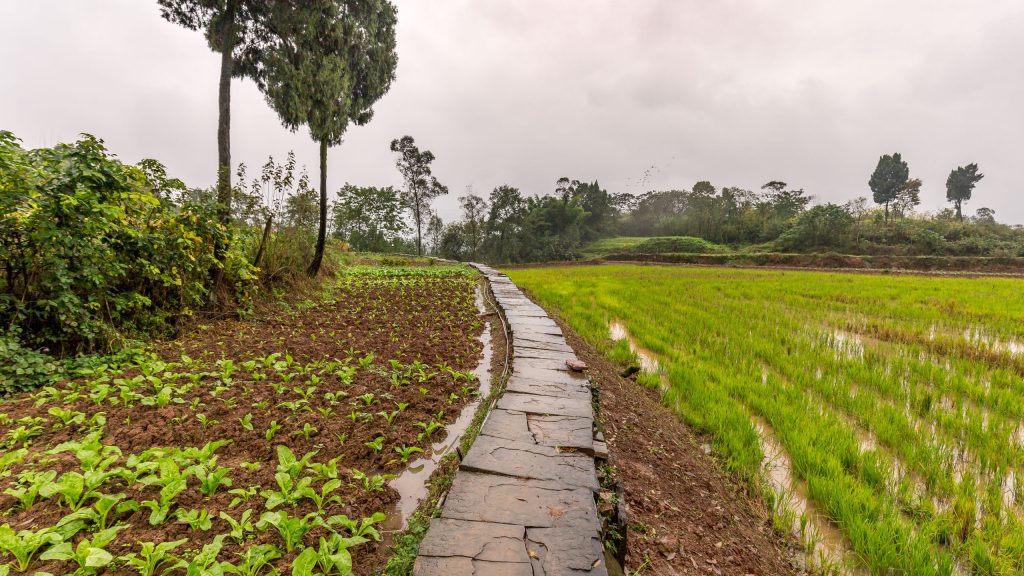
Dazu is two hours by car from Chongqing and that’s why I recommend hiring a car to make this day trip. A car is a must if you want to see 4, or even all 5 places that are inscribed in the Dazu Rock Carvings UNESCO World Heritage Site. Ask the hotel for a driver or otherwise hire a taxi for the day. If you are a good negotiator it should cost you around 400-450 RMB, everything included. Start the day early and make sure to go to Baodingshan first. It’s the main site and if decide to just stop by on your way to Chengdu then this is the location to visit.
Beishan is the second choice followed by Nanshan, Shimenshan and Shizhuanshan. The last I haven’t visited myself as I wasn’t able to get there in time. I must say that I left Chongqing at 9AM and not at 7AM which I planned. See the GPS track below for the 4 locations I visited. Now let’s get into more detail on each of the locations.
Dazu Rock Carvings, a short history lesson
In the early 7th century during the Tang Dynasty Dazu town was founded and a new art movement developed there soon after in the 9th century. Artists started to carve sculptures mostly related to Buddhism in cliffs and other rock formations. There are also carvings related to Taoism and Confucianism. It’s an important place where these three religions come together in beautiful aesthetic rock art.
The 5 places mentioned in this article are those inscribed by UNESCO but there are in total over 70 sites with rock carvings around Dazu. There are over 60000 statues in total which all depict the 3 religions but also scenes of daily life. The last carvings where made during the Southern Song Dynasty and date to the 13th century. The Dazu Rock Carvings are the best preserved cave temple art of its kind in China.
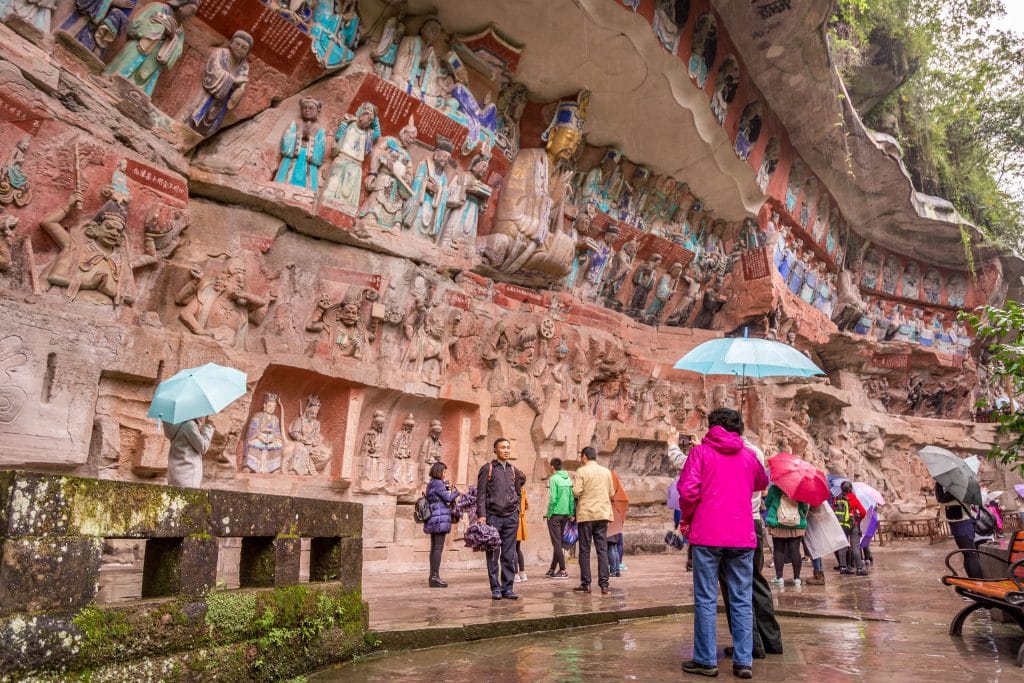
Locations of the Dazu Rock Carvings
There are over 70 locations but there are only 5 that make sense to visit for the normal traveler. These are: Baodingshan, Beishan, Nanshan, Shimenshan and Shizhuanshan. Let’s have a closer look at these 5 locations.
Baodingshan Rock Carvings
Baodingshan is, in my opinion, the most beautiful of all the locations of the Dazu Rock Carvings. It was designed by Zhao Zhifeng and carved under his supervision in 70+ years starting in the late 12th century. Baodingshan can be divided in two parts: the large and small bend with a temple containing an Avalokitesvara with 1000 hands in the middle. In total there are over 6000 statues, mostly dedicated to Buddhism, spread over various cliffs, caves, and collections.
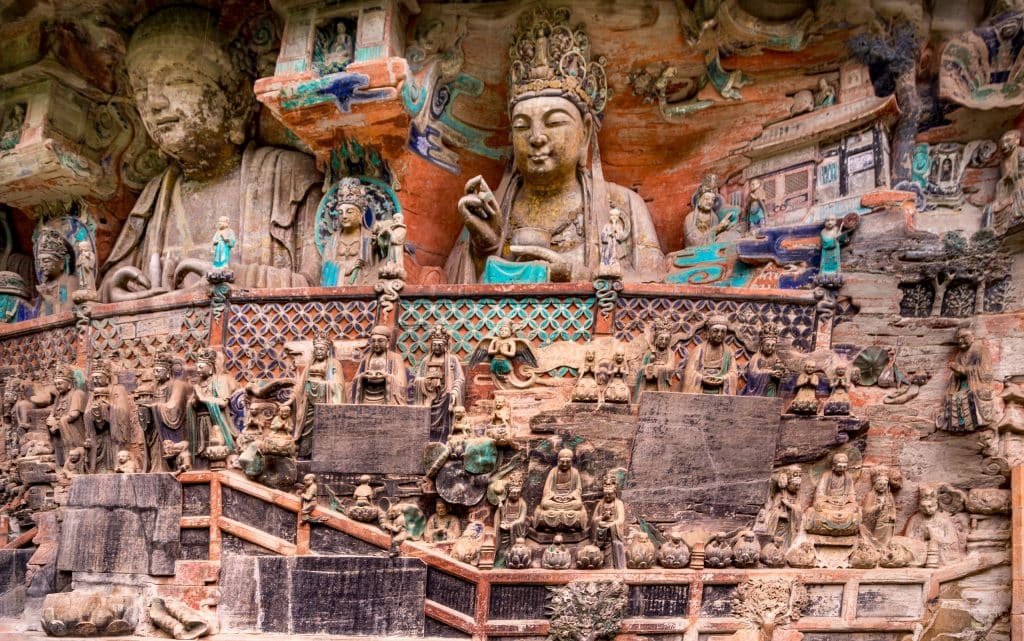
The site is carved in a natural cliff that’s bend around a river. As with many famous places in China the entrance is quite far from the site itself. This wouldn’t be a big issue if the weather was nice but walking in the rain wasn’t so comfortable. I did take a golf cart for the last part though. The first tableaux depicts various scenes from the nether, or hell, world (see photo above). This was the point where I stood still for at least 10 minutes just admiring the beauty of those rock carvings and thinking by myself: “Why didn’t I visit this site sooner”.
The first part until the temple is called the Great Buddha Bend and is a large cliff which is different as other rock carvings which normally are in caves. After the hell story there are various other Buddhist stories on the 31 tableaux including the Nirvana After Death, the Peacock Queen, and the Taming of the Wild Ox tale. Some statues are huge measuring several meters. Others are just a few centimeters tall. Many carvings are painted in red, green, blue, and gold colors making them really pop. It took me at least 90 minutes to admire the first part of Baodingshan.
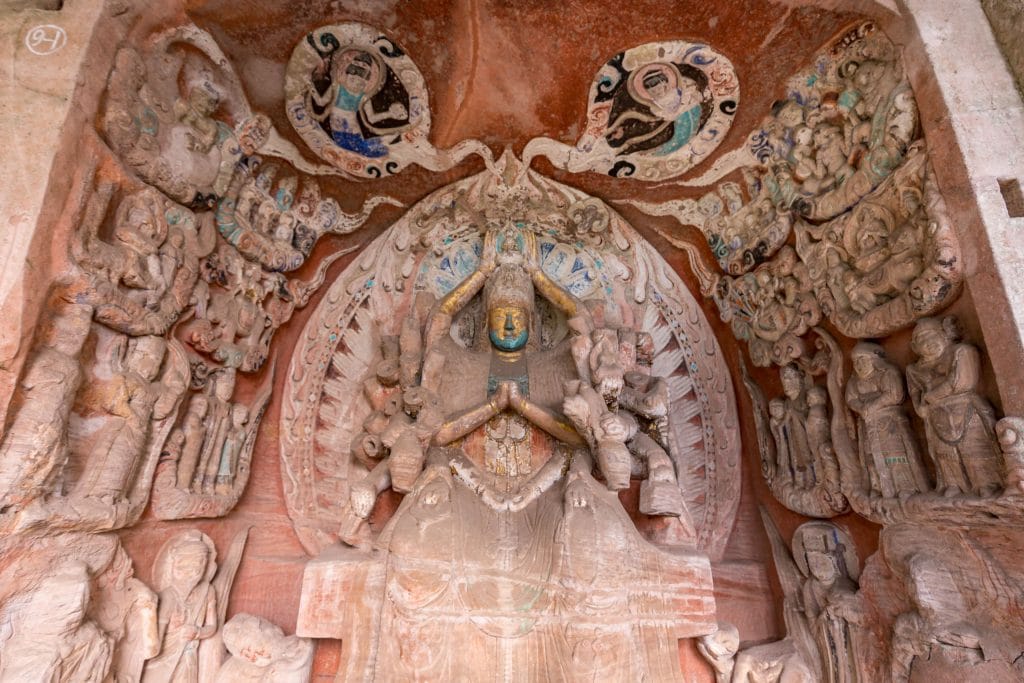
The second part, called Little Buddha Bend, didn’t take that much time. Most interesting where the Buddha Wheel of Life, the Protectors of Buddhist Law, and a few very dark caves. As it started to pour rain I hurried to the nearby museum displaying several artifacts and historical data of the Dazu Rock Carvings. Around lunch time I continued to Beishan.
Beishan Rock Carvings
It’s a 20-minute drive from Baodingshan Rock Carvings to Beishan Rock Carvings. Beishan has several places with carvings but those at Fowan is normally referred to as the Beishan Rock Carvings. Beishan is different and consists of a maze of caves and caverns. There is a south and north section which together are over 300 meters long, have over 5000 statues divided over 290 scenes. Another difference is that there are much more details in many of the larger statues. Color too, but the fine details and craftmanship is what I remember.
I spend about 90 minutes at the site which wasn’t enough time, but I did want to visit two of the smaller sites too. It did help that it was low season and raining as I didn’t see that many other tourists at this world-famous rock carving site. I went to Nanshan around 3PM.
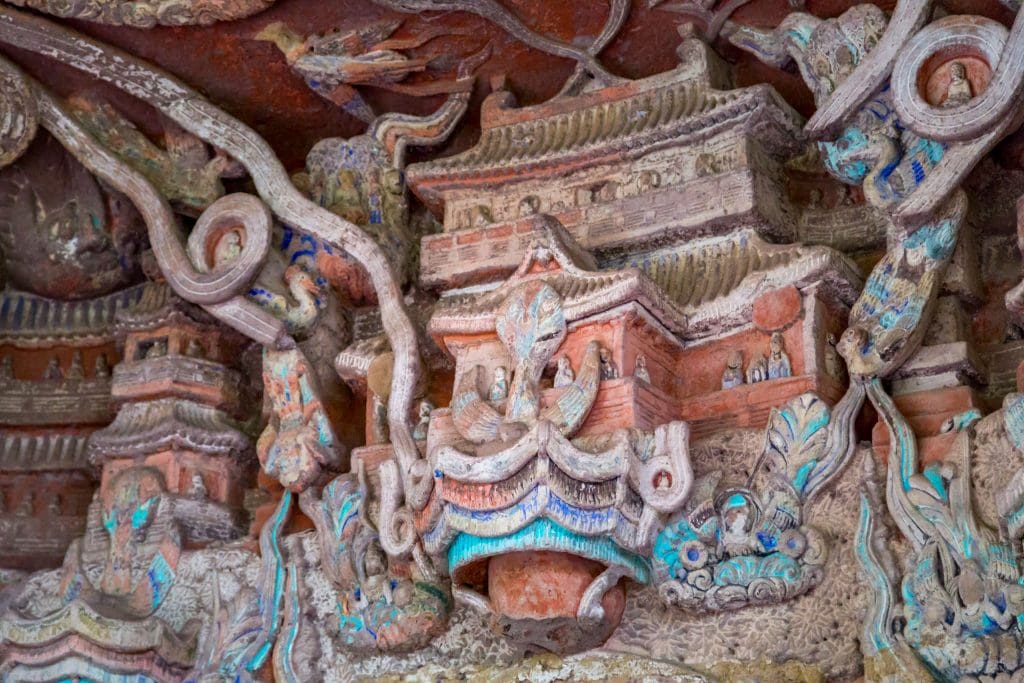
Nanshan Rock Carvings
If you need to choose a 3rd site I recommend going to Nanshan Rock Carvings as it’s close to Dazu and the most beautiful one of the remainders. It’s a small climb up the hill from the parking lot but that’s well worth it, even in the rain!
My main reason to visit Nanshan Rock Carvings was the fact it’s devoted to Taoism unlike the other two previous sites which are dominated by Buddhism. The site is much smaller as the cliff is just under 90 meters long and has only 15 caves. The stone dragon, female deities and the Sanqing Ancient Grotto are those I remember most. Nanshan shows how religion changed in 12th century China and has the most complete Taoist rock art carvings in all of China.
I explored Nanshan in just 45 minutes as it’s a small site. I then continued to Shimenshan which is on the way to Chongqing but was worried I wouldn’t make it. It was already late afternoon.
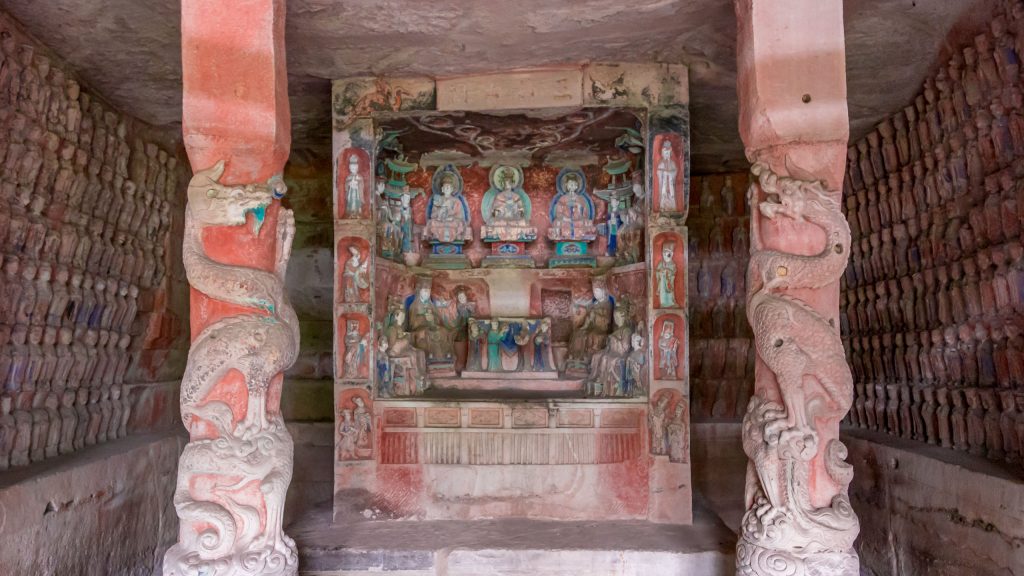
Shimenshan Rock Carvings
The Shimenshan Rock Carvings are a bit difficult to find as there is just a Chinese sign on the road 20 kilometers out of Dazu. Check my GPS tracks below to see the exact location. You must walk through rice fields over a small stone path to find the entrance, which was closed when I arrived. It’s a site not often visited by tourist, but I didn’t come this far to look at a closed gate. I just knocked on the gate and I heard someone get up, stumble around and unlock the gate. It looked as if the guard lives there so if you arrive and it’s closed just knock on the door.
Shimenshan is even smaller as Nanshan with just over 70 meters of carvings in 12 niches and caves. The statues are a combination of Buddhist and Taoist statues of which the cave with peacock (see photo below) was the most beautiful. A series of small niches on a cliff just around the corner has magnificent Taoist carvings. Have a look at the gallery below and make sure to check the expression on the statues. I spend just 30 minutes at the site as I still had to get back to Chongqing that evening.
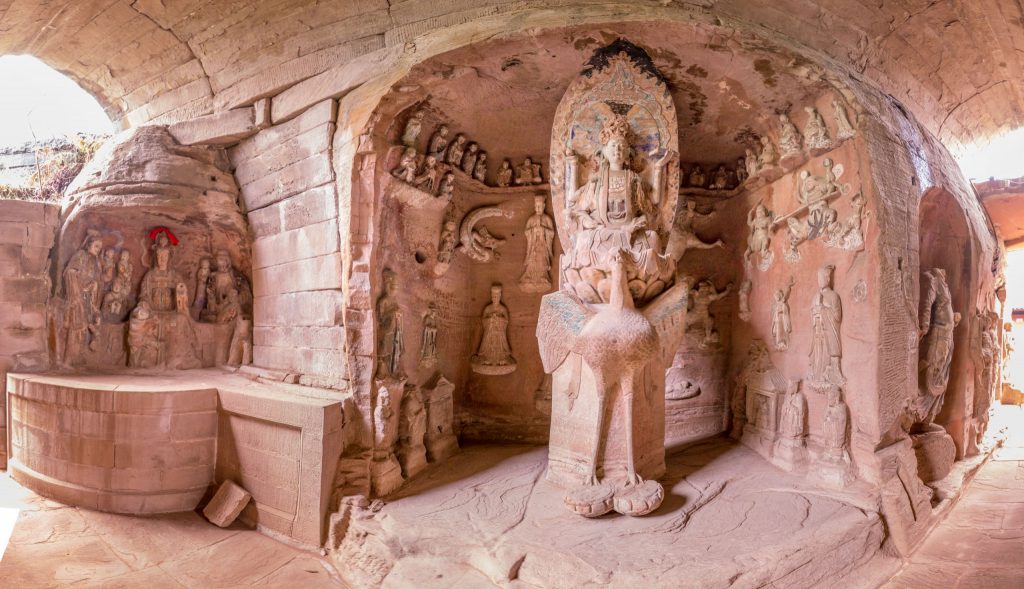
Shizhuanshan Rock Carvings
I didn’t make it to Shizhuanshan, because I slept to long in the morning, which I regret. The Shizhuanshan Rock Carvings are also 20 kilometers from Dazu but in the opposite direction of Shimenshan. To see all 5 Dazu Rock Carvings locations in a day you need to depart from Chongqing before 7AM, preferred at 6AM. The main reason I regret visiting Shizhuanshan Rock Carvings is because this is the first site that combines Confucianism, Buddhism and Taoism. I didn’t see much Confucianism in the other places. Maybe, I’ll visit another day but I’m afraid that going to Dazu for just one small rock carving site is not worth it. If you have been please let me know in the comments below, I would love to receive a photo from you.
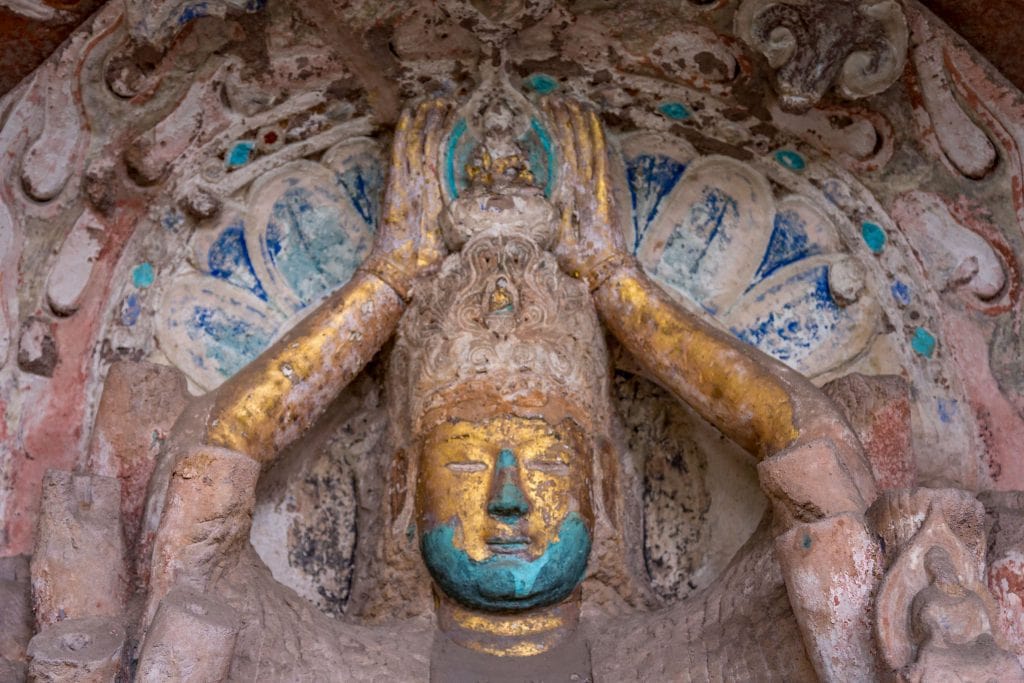
The Dazu Rock Carvings are one of my favorite sites in China. I dare to put them on the same level of beauty as the Terra Cotta Warriors in Xi’an which I visited several years ago. The reason that the Dazu Rock Carvings are not on any traditional China itinerary is that they are a bit of the beaten track for non-Chinese tourists. If you are however in Chengdu or Chongqing, then do visit the Dazu Rock Carvings. They are beautiful examples of Chinese rock art and bring Confucianism, Buddhism and Taoism together. A place you won’t forget.
Stay tuned for more stories and subscribe to the newsletter or follow CTB on social media (Facebook, Twitter, Instagram including Instagram stories; on all social media you can find CTB @christravelblog) to get updated information.
Did you visit Dazu Rock Carvings too or do you have questions? Please leave a comment at the bottom of the page. Love to hear from you!
Gallery Dazu Rock Carvings
Click an image for a full screen gallery of more photos taken during this trip. If you like to use any photo for commercial, private or editorial use please contact first for permission and/or pricing.


